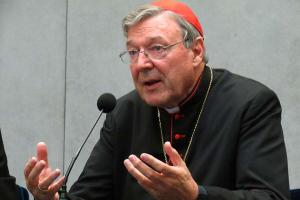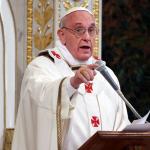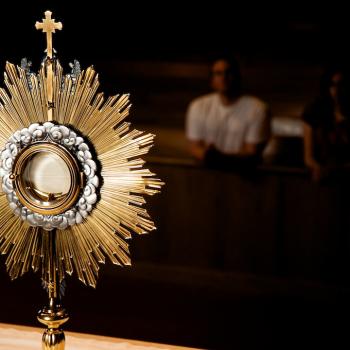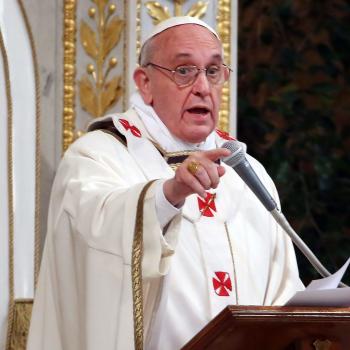The goal of this blog was to analyze news from a Catholic perspective.
The first few posts have detailed, in part, my move from anti-Catholic Protestant to committed Catholic.
This post will split the difference in more ways than one.
One of the reasons I became Catholic is the “both/and” perspective on interpreting Scripture. Too often American Evangelicals see two conflicting ideas and interpret it as black/white and either/or. For example, there are verses that suggest baptism is necessary for salvation (1 Pet 3:21) and verses that suggest only confessing the name of Jesus is necessary for salvation (Rom 10:9; Lk 23:39-43). Evangelicals pit these ideas against each other. But as Catholics, we can confidently say yes to both ideas.
Protestant apologist J.P. Holding has a series of essays on the both/and ideas of interpreting Scripture that were common in the Ancient Near East. When you see Scripture that says faith saves us (Rom 4:1-8) and Scripture that says works save us (Jms 2:26), an American Evangelical scoffs and asks “Well, which saves us then: faith, or works?” And the answer a first century Christian would give is the same answer a Catholic would give today: “Yes.” Holding details that beautifully in his essay about the Semitic Totality Concept.
 I took the long way to lead into a recent editorial in the New York Times by Ross Doudhat, referring to a memo from the late Cardinal George Pell and an essay from Cardinal Robert McElroy that may as well come from two different religions. Cardinal Pell urges Catholics to adhere firmly to tradition and blasts Pope Francis’s papacy as a chaotic mess. Cardinal McElroy urges us to dissemble all traditions, especially gender roles, and move forward with a liberal agenda.
I took the long way to lead into a recent editorial in the New York Times by Ross Doudhat, referring to a memo from the late Cardinal George Pell and an essay from Cardinal Robert McElroy that may as well come from two different religions. Cardinal Pell urges Catholics to adhere firmly to tradition and blasts Pope Francis’s papacy as a chaotic mess. Cardinal McElroy urges us to dissemble all traditions, especially gender roles, and move forward with a liberal agenda.
Here is where the American Evangelical black/white, either/or thinking creeps in. Catholics are bound to react to these pieces with contempt depending on which side of the political aisle they might fall. Conservative, right-wing Catholics will be cheering Pell and jeering McElroy. Liberal, left-wing Catholics will be praising McElroy. This is the shadow of a massive schism in our Church.
But it doesn’t have to be that way.
The both/and nature of the Church, I thought when I rejoined, was the greatest part. We may argue about agendas, but united in Christ and protected by Mary we can continue forward in unison. But both sides are becoming incorrigible. No one wants to find a middle ground, both/and solution. Doudhat laments:
As someone who basically agrees with Pell’s diagnosis, I can read McElroy and find points of reasonable discussion, particularly where he talks about the role of Catholic women in the governance of the church. In theory one can imagine a Catholicism with more nuns and laywomen in important offices that retains its core doctrinal commitments, just as — to jump off from the pope’s recent interview — one can imagine a church vigorously opposed to unjust discrimination or state violence against gay people that also still holds to the rule of chastity and the centrality of sacramental marriage.
I wish that as a Church there was a way we could come together and find a happy medium on these polarizing issues. It is cruel and cold-hearted to turn a blind eye to the plight of gay people in other countries. We can advocate for their rights to exist without elevating same-sex marriage to the level of sacramental marriage. We can include more women in parish and Vatican leadership roles without elevating them to the sacramental priesthood.
The role of the priest is mentor and guide, preparing us to change the world. He should be encouraging all of the laity, women included, to take a more active role in parish leadership. That often means he should take a backseat and let the laity drive. There are, in fact, several ministries at my own parish that are entirely lay-led with no involvement from the priests. This is as it should be: formed by the clergy, we the laity of both genders should then take that teaching forward first to this generation and then the next.
The way forward is neither the liberal way nor the conservative way. It is the synthesis of embracing both.












